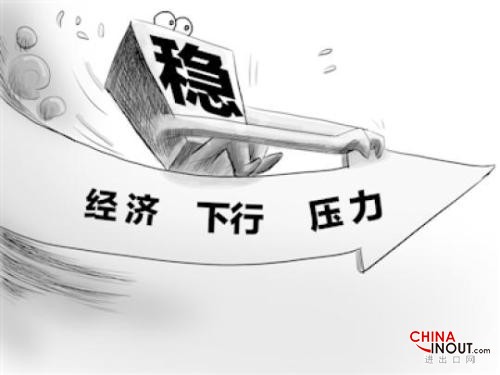新华社引用习近平周二的讲话称,尽管有全球贸易疲软以及高内债等不确定因素,中国未来的年经济增长率仍然能保持在7%左右。
新华社援引习近平的讲话,称中国在未来五年内将保持不低于6.5%的年平均增长率,以实现实现国内生产总值和城乡居民人均收入比2010年翻一番的目标。
在第三季度,中国的增长率跌至6.9%,达到经济危机以来的最低谷。此番重挫部分源自于投资减少以及央行下调利率和最低存款准备金的举措。
习近平表示:“综合起来看,我国经济今后要保持7%左右的增长速度是可能的,但面临的不确定性因素也比较多。”习近平还提到,国内外主要研究机构普遍认为,在2016年至2020年即“十三五”时期中国国年均经济潜在增长率为6%到7%。
习近平说:“从国内生产总值翻一番看,2016年至2020年经济年均增长底线是6.5%以上。”
习近平说,预计全球贸易将持续萧条,中国的消费和投资会因此放缓,并且中国还可能面临着高负债水平的潜在危机。
习近平在解释“十三五”计划(即中国在2016年到2020年的经济社会发展蓝图)时提及,未来五年的发展重心不仅要放在经济增幅上,还要放在其质量上。
最高领导人为放缓的增长冠以“新常态”之名,中国政府正试图把世界第二大经济体转变为可持续、消费者主导的发展模式。
中国总理李克强称中国在未来五年里需要至少6.53%的年增长数目。本周二,在国家电台中,李克强的讲话指明环保措施的推行也是经济增速放缓的原因之一。
投资者们正在等待政府宣布下一个五年计划经济增长目标。在一场关于该五年计划的重要党内会议后,有官报称中国计划保持“中等偏上”的经济增速,来实现GDP和人均收入翻一番的目标。
政策讨论方面的消息来源称,鉴于当下全球经济动荡,国内需求疲软,决策者也许会在制定长期增长目标时遇到更多困难。
有关消息来源称,中国政府会更倾向于在“十三五”期间保持6.5%到7%的增长率。该目标将在明年三月经由人大审议决定。
中国发改委主席徐绍史称,中国有条件在未来五年内将经济增幅保持在中等偏上的水平。
徐绍史在新闻发布会上说,相比于经济增长数据,中国政府会更倾注更多注意力在就业、收入以及物价上。
官方数据显示,中国政府会超越“十二五”期间的经济增速,达到7.8%的水平。但是在那时,经济增速已经显然下滑,从2011年的9.5%下滑到二十五年来的低谷7%。(中国进出口网)
China can maintain annual economic growth of around 7 percent over the next five years but there are uncertainties, including weak global trade and high domestic debt, Xinhua news agency quoted President Xi Jinping as saying on Tuesday.
Annual average growth would be no less than 6.5 percent in the next five years to realize the country's goal of doubling 2010 gross domestic product (GDP) and per capita income by 2020, Xinhua quoted Xi as saying.
Chinese growth dipped to 6.9 percent in the third quarter, the weakest since the global financial crisis, hurt partly by cooling investment and prompting the central bank to cut interest rates and bank reserve requirements again.

"It's possible for China's economy to maintain growth of around 7 percent (over the next five years) but it also faces more uncertainties," Xi said, saying that main domestic and foreign research institutions believe China's potential growth could be between 6 and 7 percent in 2016-2020.
"Looking at the need to double GDP, the bottom line for annual average economic growth between 2016 and 2020 is more than 6.5 percent," Xi said.
Global trade was expected to remain sluggish and growth in China's consumption and investment could slow, and there may be risks from high debt levels, Xi said.
Development over the next five years should not focus just on the pace of growth, but also on the quality, Xi was quoted as saying, explaining a proposal for the country's 13th five-year plan, a blueprint for economic and social development between 2016 and 2020.
Top leaders have flagged a "new normal" of slower growth as it tries to shift the world's second-largest economy to sustainable, consumption-led development.
Premier Li Keqiang has said that China needs annual growth of at least 6.53 percent over the next five years. He was quoted by state radio as saying on Tuesday that environmental protection measures had contributed to the growth slowdown.
Investors are waiting for the announcement of an economic growth target for the next five years. A communique issued after a key party meeting that discussed the five-year plan said China aims to keep the economy growing at "a medium-to-high rate" to achieve the goal of doubling GDP and per capita income.
Policymakers may face more challenges in deciding the long-term growth target given uncertainties in the global economy and signs of weakness in domestic demand, sources involved in policy discussions say.
The government may favor annual growth of between 6.5 percent and 7 percent for 2016-2020, some sources say. The growth target needs approval from parliament when it meets in March.
Xu Shaoshi, chairman of the National Development and Reform Commission (NDRC), the top planning agency, said China had the conditions to keep economic growth at a medium-to-high rate in the next five years.
Xu told a news conference that the government would give more attention to employment, incomes and consumer prices than economic growth figures.
The government will exceed the 7 percent target for the current 2011-15 five-year plan with growth averaging around 7.8 percent, official data shows. But growth has slowed markedly in that time, from 9.5 percent in 2011, to being on track for a quarter-century low of around 7 percent this year.











